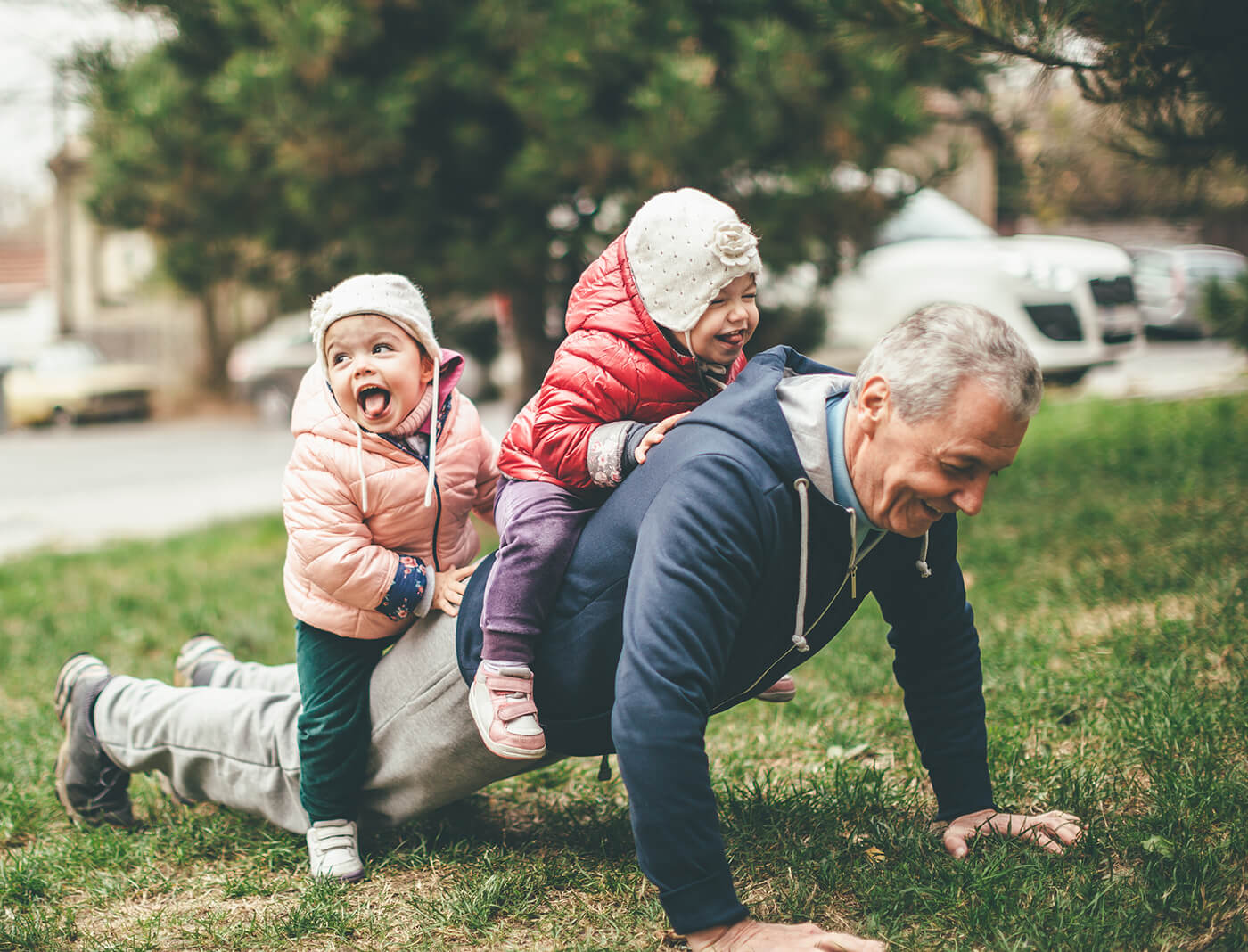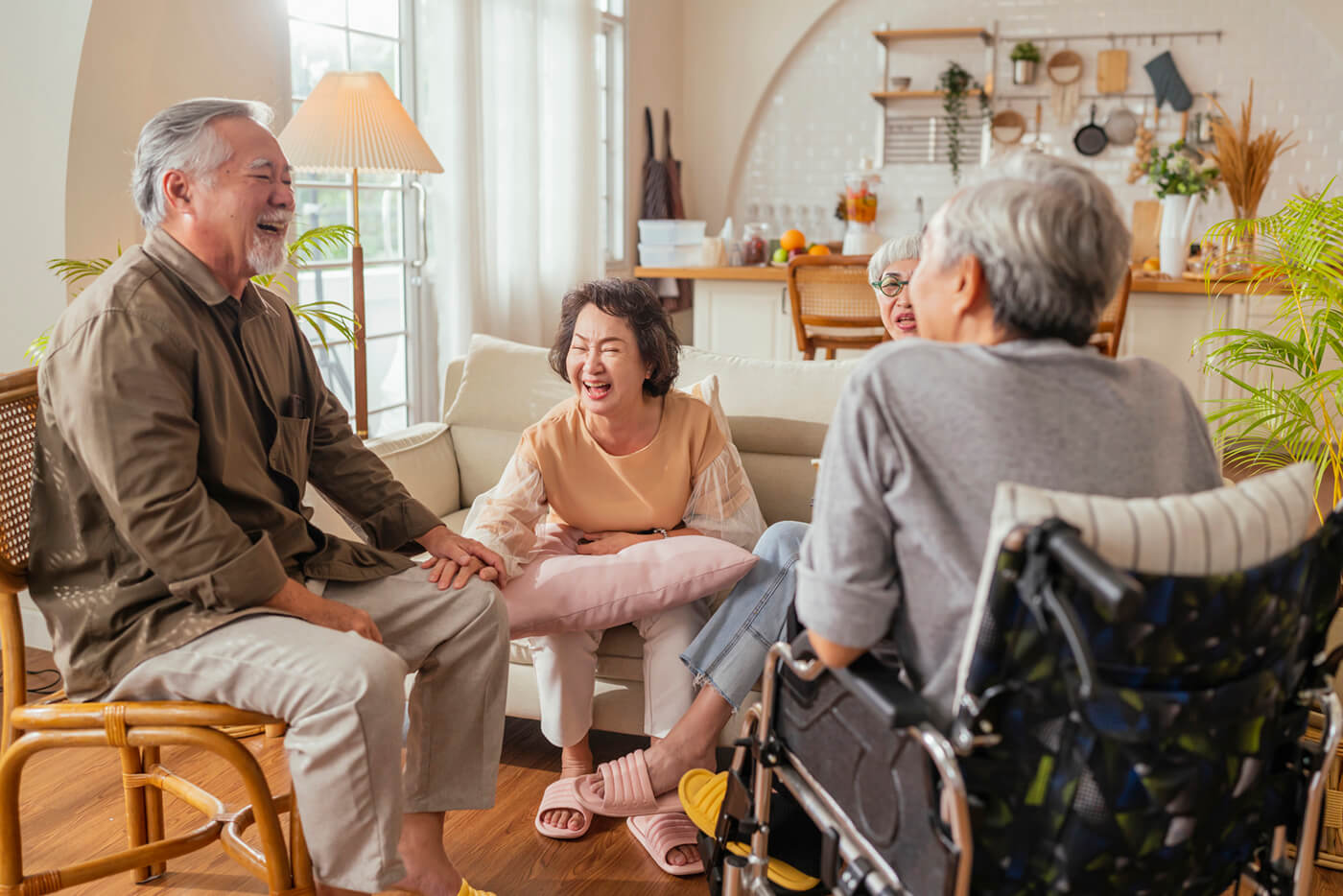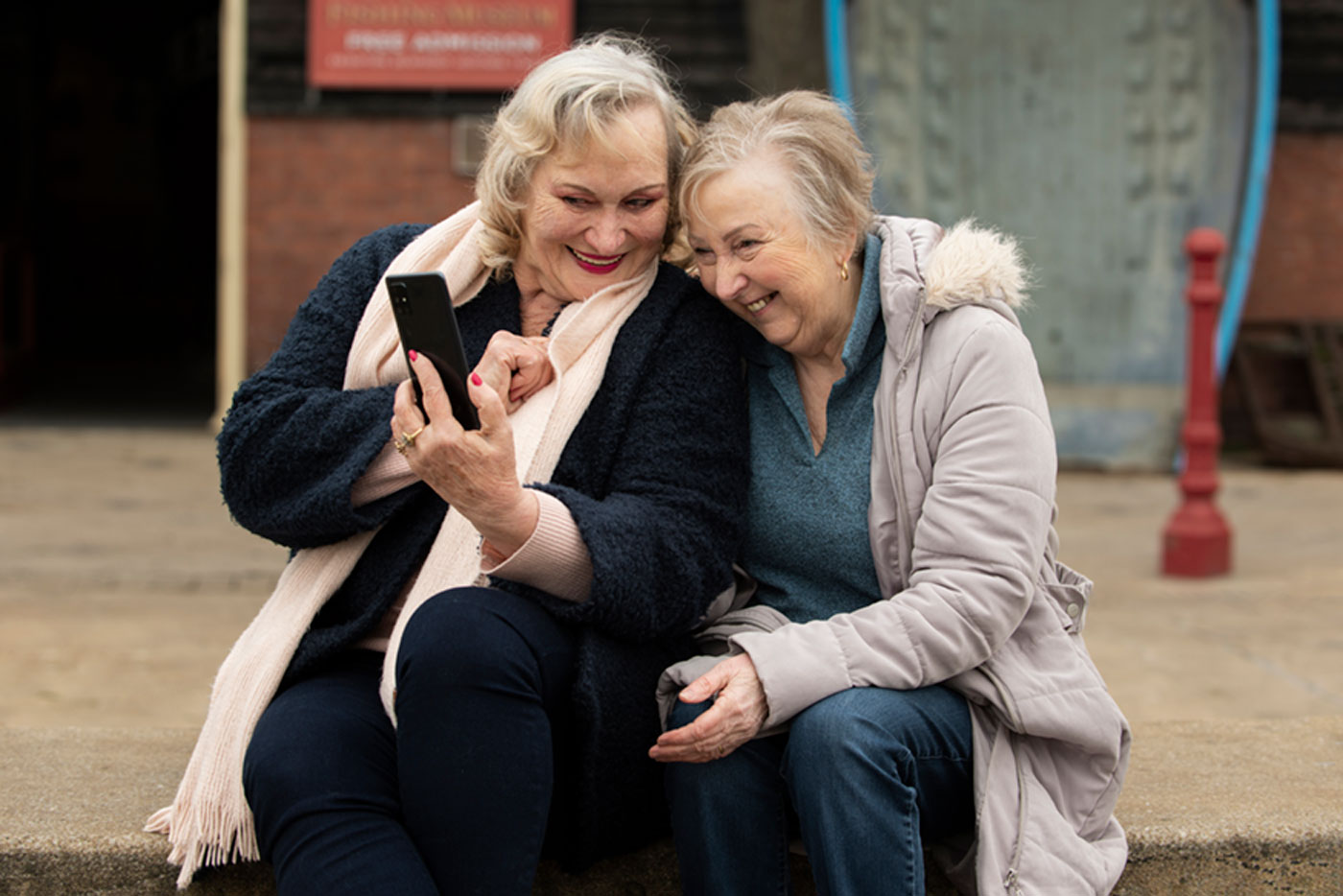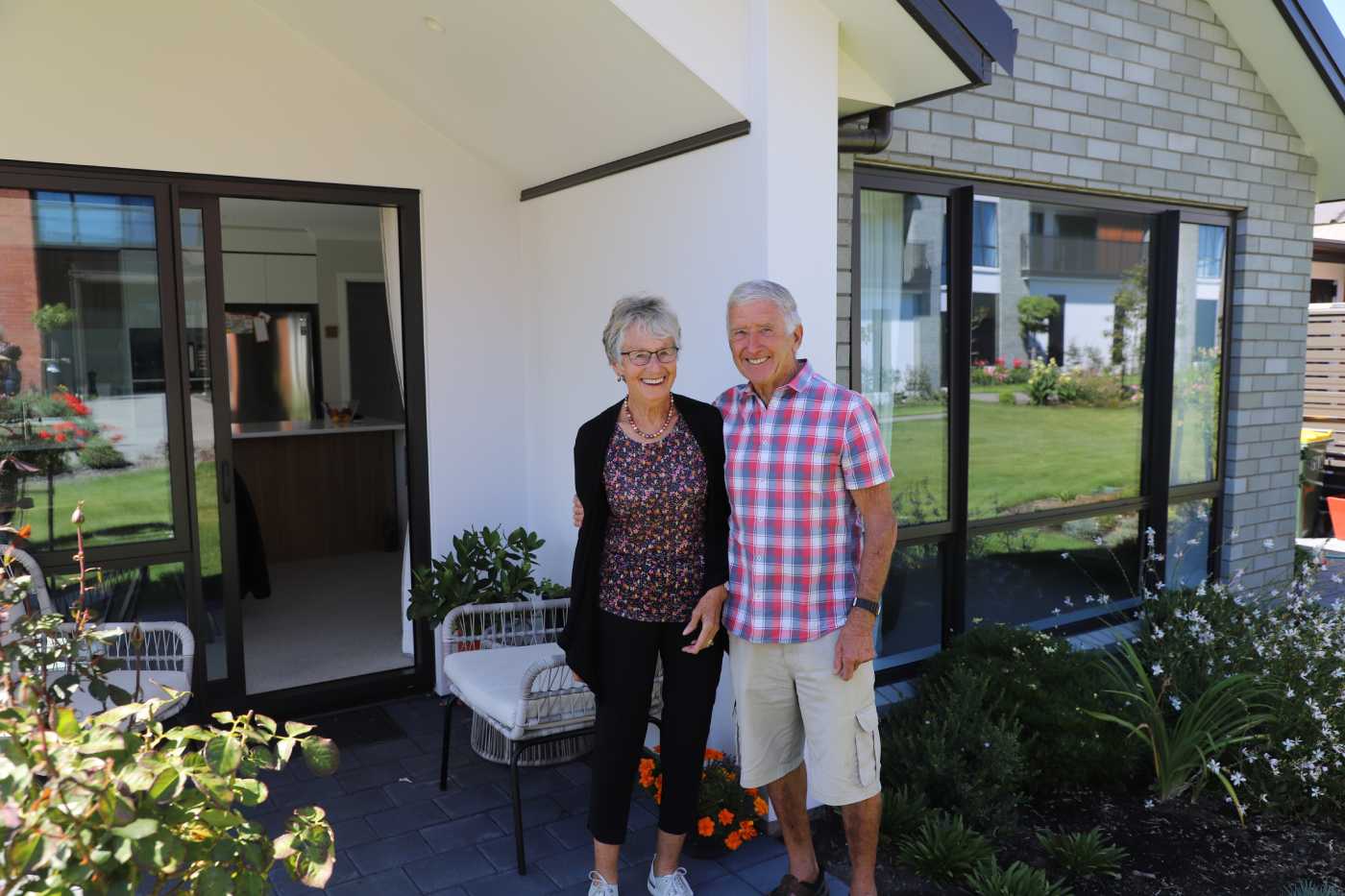
Falls Prevention and Exercise In Retirement

As a young healthy person, the idea of taking classes to encourage balance seems far off and unnecessary, however taking care of your physical health now could be a great building block to being on an even keel in your twilight years.
Statistics show that one in three over 65 year olds have a fall annually, with that figure increasing to one in two by the age of 80. Working to lower these figures is a combined effort by those who really care about our elderly: family members, professional health care workers, retirement villages and care homes.
There are so many wonderful, fun ways to stay active that it really doesn’t need to be a chore to retain your strength and reduce the risks associated with growing older. Whether you enjoy living in a retirement village with access to exercise facilities and classes, or out in the community, there are options for every type of person no matter your interests or physical abilities.
What types of strength and balance classes or similar groups do a range of Retirement Villages across the country provide, with the aim of preventing accidents?
Maygrove Village in Orewa, is one of those villages who provide opportunities for residents to stay active in a fun and inclusive environment. Toni Hatton, who is the Assistant Village Manager at Maygrove, said their village offers a walking group and three fitness classes per week. Residents can choose from aquacise, sit fit and aerobics, plus they have larger group outdoor activities such as bowls and croquet available for those who enjoy mixing socialising with sport.
In a similar vein to Maygrove, Settlers Lifestyle Village in Albany says they offer a selection of Walk n talk, petanque, lawn bowls, table tennis, keep fit, kako line dancing classes, therapeutics, aqua size, Tai Chi, table tennis, darts, indoor bowls, and Xer sit! Alongside this enticing list there is also Walk n Talk Friday mornings – one hour walk around local area, through bush, park and shopping area which offers a nice opportunity to distract from the effort of exercising by chatting with a friend!
Ryman’s is another company who encourages exercise. Their website provides information about their wellness programmes - based on the belief that ‘you’re never too old to exercise - just find what’s right for you’. Ryman Triple A, which stands for Ageless, Active, Aware is a complimentary exercise programme available to all Ryman residents. The classes are designed with older people in mind to enhance their quality of life and wellbeing with the aim of improving strength, flexibility, balance, agility, and giving greater independence for longer. Residents can try functional fitness and circuit, and for those less mobile, a ‘sit and be fit’ class.
All Summerset villages offer a variety of opportunities to exercise from bowls, to walking groups, to yoga, to aqua aerobics… and many more! They have designed their own signature exercise programme, CB Fit, which is an accredited falls prevention class as a part of the “Live Stronger for Longer” initiative. This has been rolling out across the villages since 2019 and is built on a foundation of the 4Ps: Prevent, Protect, Progress and Preserve. Summerset have also recently developed their own chair-based exercise classes as an extension of the standing strength and balance class and these will be released later this year. A short video of CB Fit can be viewed here: www.youtube.com/watch?v=jvSp7voLCgM
Falls are more prevalent in older people, and at Broadview Lifecare, they know that physical strength and a person’s health and wellbeing plays an important role in preventing injury. Their specialised activities team includes a Diversional Therapist who is also an Occupational Therapist and tailors exercise programmes to individual needs. They have many different inhouse activities and focus on what the resident enjoyed throughout their life, such as ball games, to encourage participation.
Indoor bowls provide another form of exercise and social connection. As well as in-house activities, they have lots of outings in the community to support movement and create meaningful experiences.
To balance all these excellent opportunities available in retirement villages, what questions should you be asking about staying active while making a choice about a retirement village or aged care?
Jaclyn Chishom, an Occupational Therapist who works in older persons health suggests “Ask the facility for their physiotherapy to client ratio if they advertise they have physiotherapy available. And ask what expected amount of time is to be given daily /weekly to the resident for physiotherapy input or is there a criteria to be seen by a facility physio”. Her concerns are that “aged care facilities market that they have physiotherapy available, but this resource is very limited. Some large facilities have one contracted physiotherapist that comes in once a week to see all their ‘priority’ residents - which are usually new residents or returning from hospital residents who require the initial physio assessment or a review to determine manual handling and or mobility status. They barely even get the chance to actually do ‘exercise’ or set up programmes for exercise for residents.”
Jaclyn also adds that facilities need to be asked about occupational therapists, diversional therapists, and/or activity/therapy assistants - do they have one, what is the ratio, how often will the residents be seen individually or is it all activities done in a group setting? The concern she mentions is that often those residents who don’t want to go to facility groups or for whom it is too difficult for them to get there, won’t get the hands-on support, guidance or programme to do daily exercises. It is these residents that are in greater need of active exercises. Retirement villages won’t often put their financial resources into individual active exercise needs. What a retirement village would really benefit from is staff members who can offer that individual one-on-one guidance and support and work closely with the resident week to week to see real improvement.
Programmes in the community
Within the wider community activities on offer, Age Concern’s fall’s prevention programme - SAYGO - is a proven way of increasing both your strength and balance. Those who participated in the programme for 10 weeks were found to be stronger and less likely to fall, and those who attended for a year found even greater benefits. It was originally developed in Dunedin and now has a number of classes across the nation with thousands of participants. These are community classes, which keep fun and inclusion in mind with accessibility for all walks of life. The entry is an affordable gold coin donation which usually covers venue hire. The first ten weeks of the programme is run by a paid instructor, who then is replaced by volunteer peer leaders.
The New Zealand Government, the Ministry of Health and ACC have developed an initiative ‘Live Stronger for Longer’, which aims to prevent or reduce falls by having people attend strength and balance classes. The ACC assesses each programme to understand what classes people could be referred to, and the public can see which classes are approved. It’s a great idea to visit their website www.livestronger.org.nz where you can find a range of tips about staying active, well and independent. They also have a home safety checklist and advice for families and whanau amongst information about exercising at home, finding a strength and balance class near you and other resources.
Get creative!
A fun, social sport not to be overlooked is dancing! Some refer to it as ‘the kale of exercise’ due to its health benefits. Think of it as an exercise superfood! Rock n Roll revival classes can be a great way to meet new people and get the heart pumping while making the most of the opportunity to dress up in some fun outfits! If rock n roll isn’t for you, you could try Jazz dancing, Salsa dancing or even Line dancing. Participating in dance allows elders to improve their physical function, health and well-being. Another beneficial advantage is significantly improving aerobic capacity, lower body muscle endurance, strength and flexibility, balance, agility and gait.
Staying active and improving your balance doesn’t have to be kept just for exercise classes and provided activities. Retirement is an ideal time to start something new or pick up an old sport, especially when you consider how easy it has become to be inactive in our modern world with handy mod-cons at our fingertips. Try scheduling activity into your calendar like you would an appointment. You could spread moderate to intense styles of exercise across days of the week, allowing time for recovery and rest which are all the more sweet when you’ve earned them! Pick your most energetic time of day that suits your own unique body clock and try to rule out easy excuses like bad weather or not having the equipment you need to exercise. Be kind to yourself and celebrate what you can achieve! Just starting a new routine and bringing discipline, focus and consistency into your life will not only benefit you physically, but also mentally.











